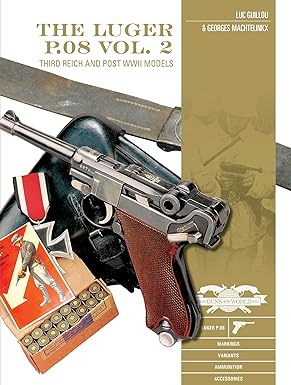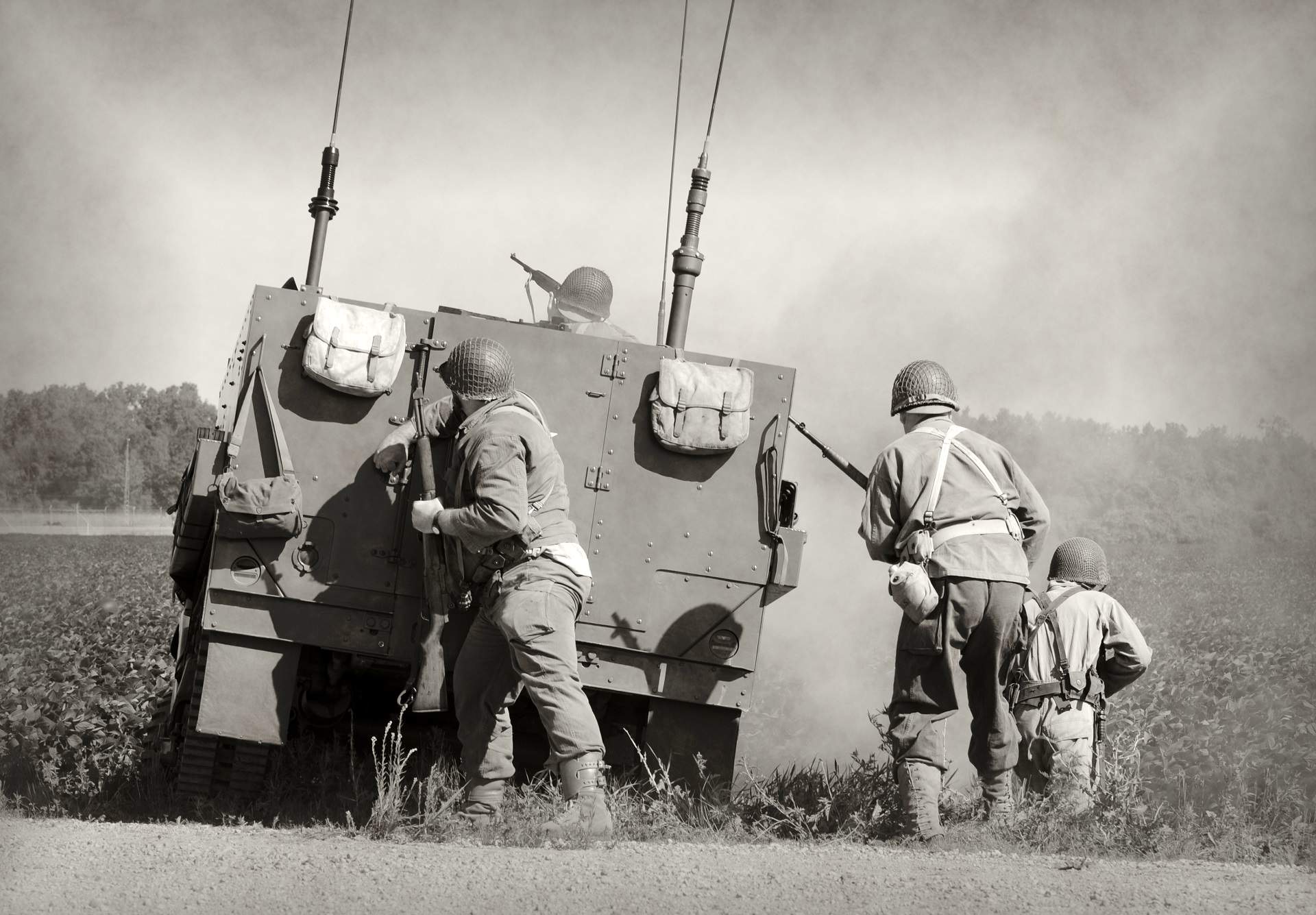World War II and the Supremacy of American Firearms
World War II was an event of truly global significance that altered the course of history forever. It took the world by storm at a time when many countries and peoples were still reeling from the devastating aftermath of the First World War, which began in 1914 and ended in 1918. World War II ultimately drew some 30 countries into the fold, whether by choice or not. The globe would be split amongst Allied and Axis powers for the period of this global war that lasted from 1939 to 1945.
The Axis powers consisted of Germany, Italy and Japan, while the “Allies” were represented by the likes of Great Britain (and all of its colonies at the time), France, the Soviet Union, and after the Japanese bombing of the American Pacific fleet at Pearl Harbor on December 7, 1941, the United States. Each of these countries and many others were forced to essentially put all of their militaristic and economic efforts into the cause of defending the globe from the tyranny of Hitler and the Nazi party and their cohorts.
The stark legacy of World War II is that it remains the single deadliest war in the history of humanity. Although many countries mourned the loss of countless people, soldiers and civilians, certain countries were hit particularly hard, with fatalities hitting the Chinese and the Russian people the greatest. The brutal legacy of WWII also includes the calculated genocide of millions of innocent Jewish people who were displaced from their families and homes and subjected to the torture of concentration camps. The extremely dire circumstances of World War II required that the Allied powers respond to the requirements of this new global landscape. A competition was under way. Both Allied and Axis powers were in a race to develop the latest and greatest weapons, whether planes, field artillery, tanks, anti-aircraft, munitions or anything else; all for the purpose of staking their own claim to predominance over planet Earth. It was that extreme a situation and there are many examples of battles within World War II in which the pendulum could have dangerously swung in the Axis direction, were it not for superior intelligence, weaponry, planning, and being on the right side of justice.
In this article, we’ll take a look at a few of the most historic firearms innovations that came out of WWII, as we explore the history of this unforgettable epoch in history that changed humanity perhaps more than any one single war.
Examples
The story of World War II is in many ways the story of innovation and technology. How can this be the case when it was also about men fighting it out in trenches and infantry literally fighting face to face? Well, it was both. At this point in history, infantry engagements on a large scale were still a common part of military engagement in the field. As Allied and Axis powers raced to gain the advantage over each other, they sought to do so by advancing technology (weapons, artillery, intelligence) in order to gain a distinct advantage over the other. In the case of the Allies, it was critical early insights into code-breaking, for example, that allowed military planners within the U.S. to provide crucial insights to other Allied members in regard to the next moves that the Axis powers would take. But the advancement of firearms, heavy artillery, tanks, anti-aircraft and other such innovations cannot be underestimated in terms of how important these advances were in ultimately winning the war. Here’s a look at some of the most important firearms of WWII that helped swing the tide of victory over to the Allies:

- - M2 Browning- .50 caliber machine gun capable of ripping through the hull of a ship. Over two million were produced for Allied troops during WWII
- - M1 Garand- The first standard issue, self-loading rifle for the U.S. military
- - M1 Thompson- Widely known as the “Tommy Gun”
- - Bazooka- The artillery for these “rocket launchers” was easy to produce and they were capable of striking targets at upwards of 300 feet.
- - M101 Howitzer- Critical for success of U.S. ground troops and an invaluable weapon for long-range targeted attacks
There were also many important sidearms, machine guns, anti-tank weapons, sniper rifles and a whole lot more. Take a look at a few of the most prevalent firearms that were used by the U.S. in World War II:
- - Colt M1911
- - Smith & Wesson M&P
- - Winchester Model 70
- - Springfield M1903A1 (Marine Corps)
- - Winchester M1897
- - Browning Auto-5
- - Remington 31
- - M1A1 Thompson
- - Ronson Flamethrower
- - Browning M1917A1 Heavy Machine Gun
History
Although there are differing opinions about the exact start date of World War II, most historians place the official beginning at September 1, 1939, the day of the German invasion of Poland. Only two days later, both the United Kingdom and France officially declared war on Germany.
The reason that this historic event is regarded as World War II, is because it truly involved the vast majority of the globe. As such, it is more than a little difficult to point to a single catalyzing event in a single location. This would be to ignore all of the micro-situations spread across the globe that all contributed in one way or another to the explosion of events that intensified with Hitler’s bold move into Poland. We see that Japan had already invaded China years earlier in the early to middle 1930’s. There were civil wars and uprisings all over the world, not the least in Spain, the Eastern bloc, and many parts of Western and Eastern Europe, as well as Asia and Africa. There were few places on the planet that were not affected by the reach of World War II.
A study of the history of WWII can take a lifetime, and many of the most accomplished historians have dedicated their careers to just that. When you study the intricacies of World War II, you see that it served to re-order and re-organize the geographic, political and socio-economic landscape of the world. The United States, for example, became a military and economic superpower very quickly, as it provided critical military equipment production support to the Allies, even before officially entering the war after Pearl Harbor. Maps were quite literally re-drawn all throughout Europe, Asia, Africa and North America, with far-reaching effects felt by all peoples of the world.
World War II ended when Axis powers were forced to unconditionally surrender to the Allies on May 8, 1945 and with the signing of the armistice on August 14, 1945. The formal surrender of the Empire of Japan was made official on September 2, 1945. This date is considered the official end date of the war in Asia. The Allies ultimately signed a peace treaty with Japan in 1951 and a treat with Germany that addressed plans for future reunification of East and West Germany. It was to take place in 1990.
The history of World War II is a long and winding road that, when explored deeply, provides insights into the many ways in which the entire world was forced to adapt to the changing times and sinister ambitions of fascist dictators in both Europe and Asia in the middle part of the 20th century.

